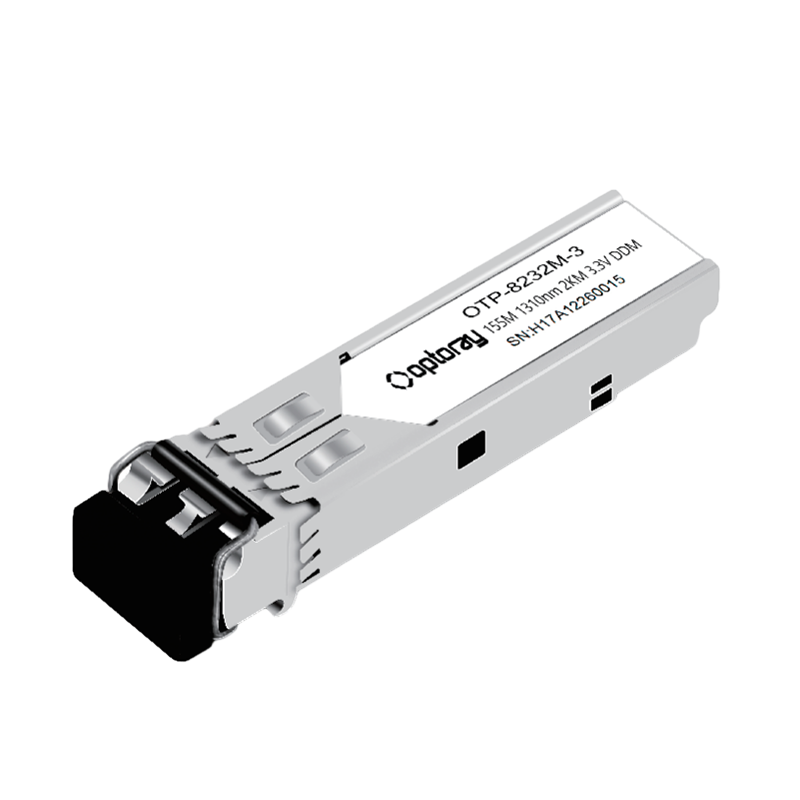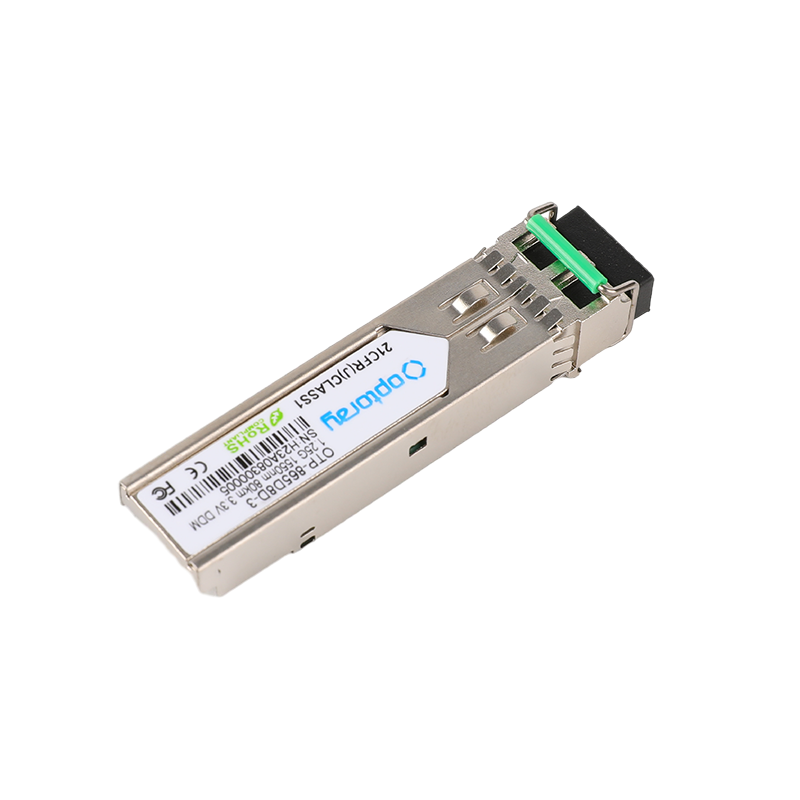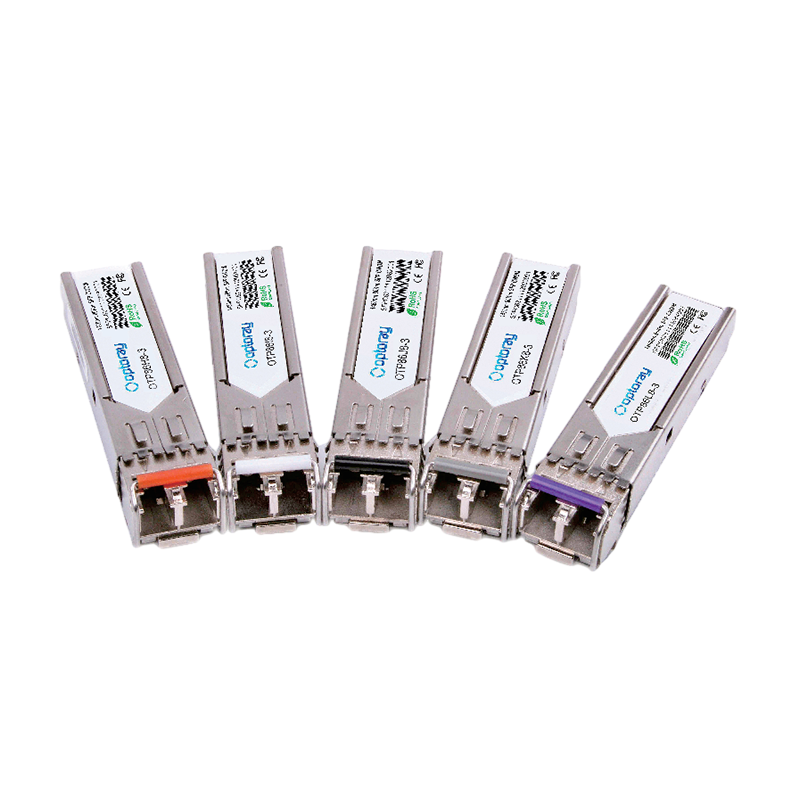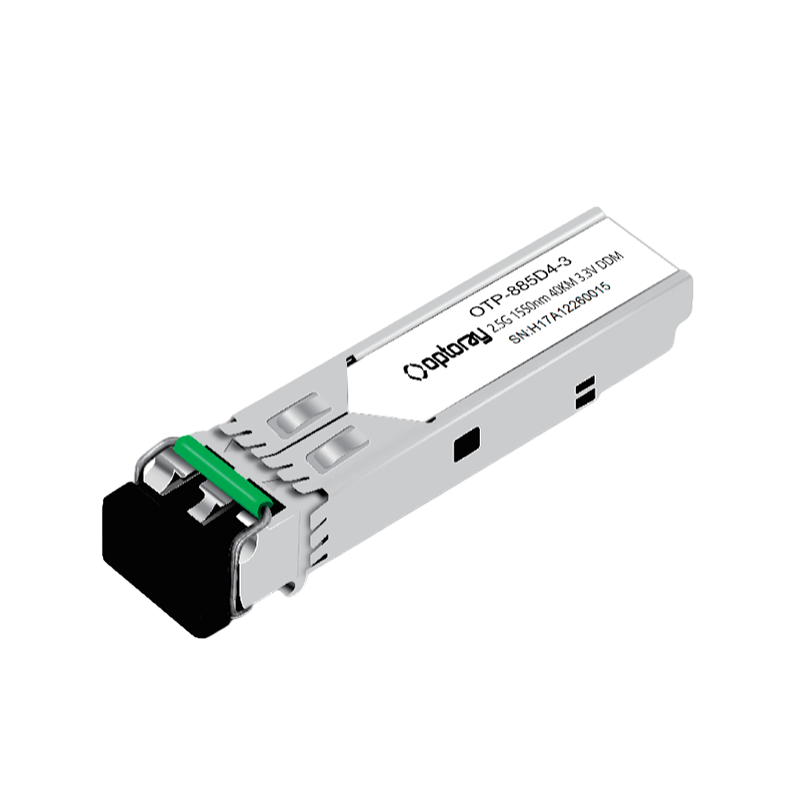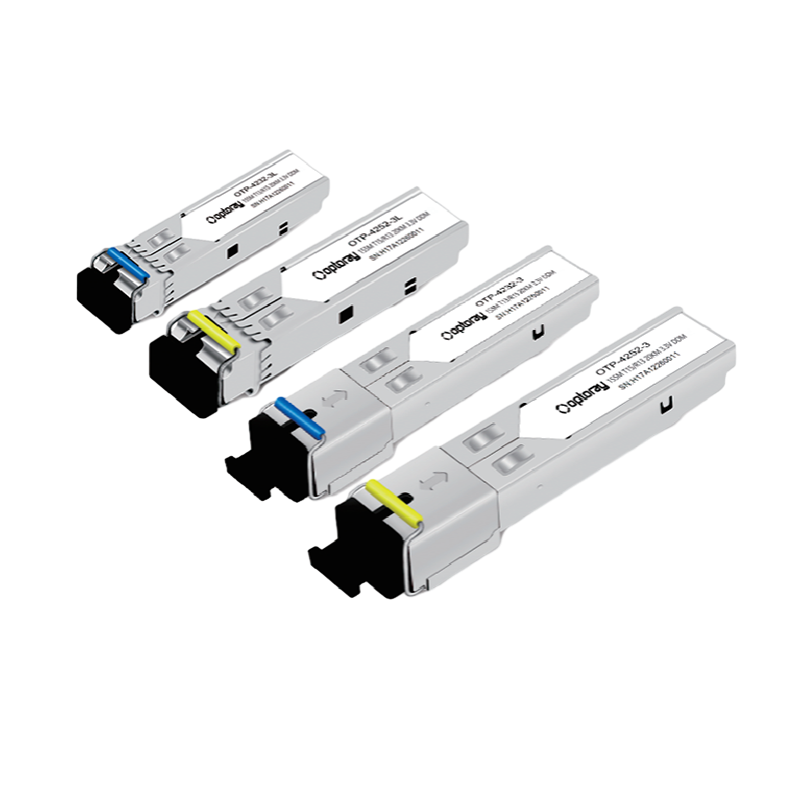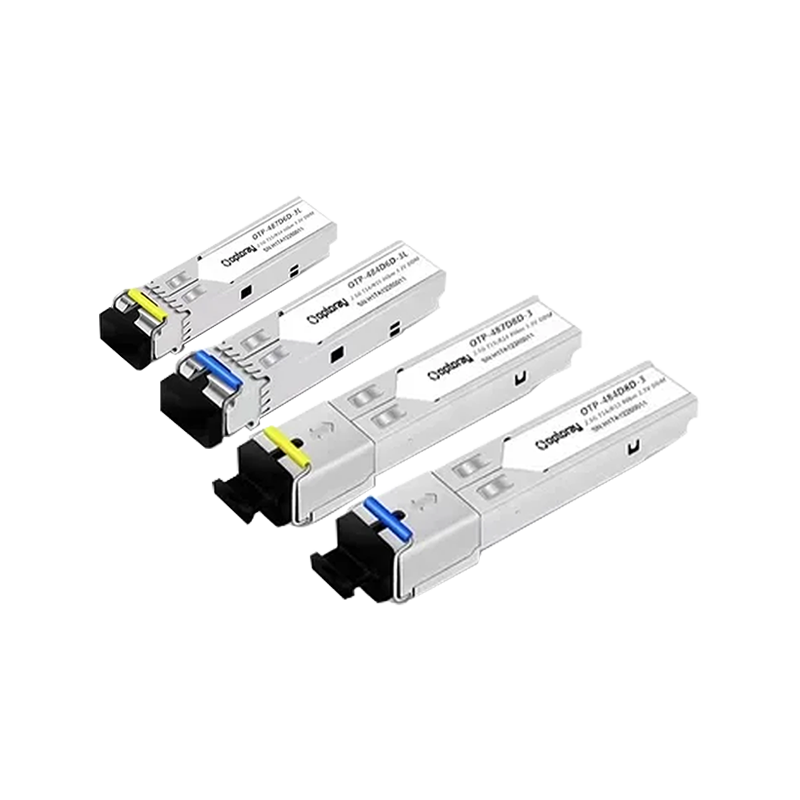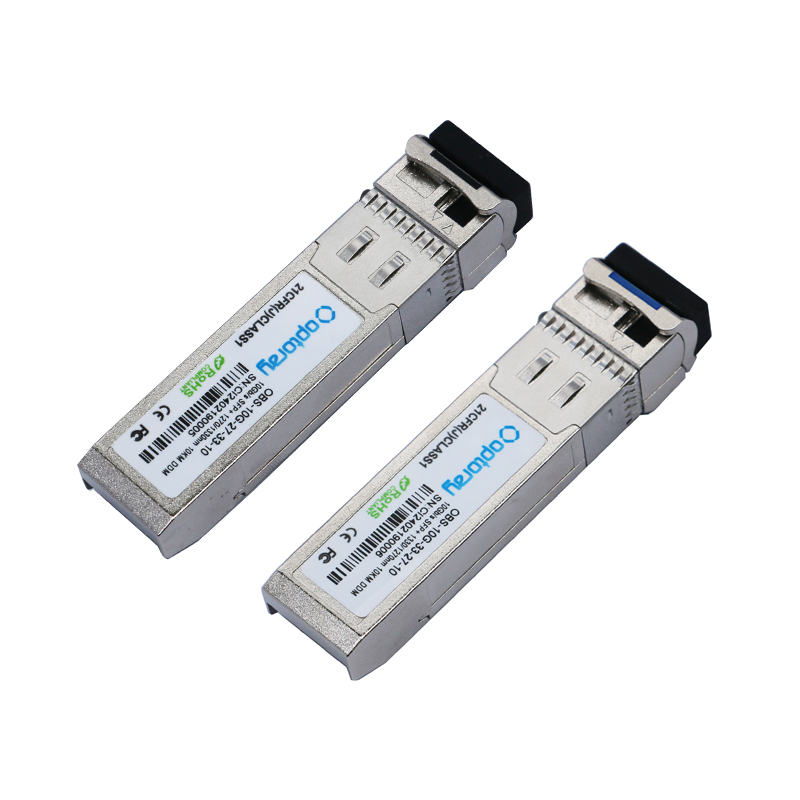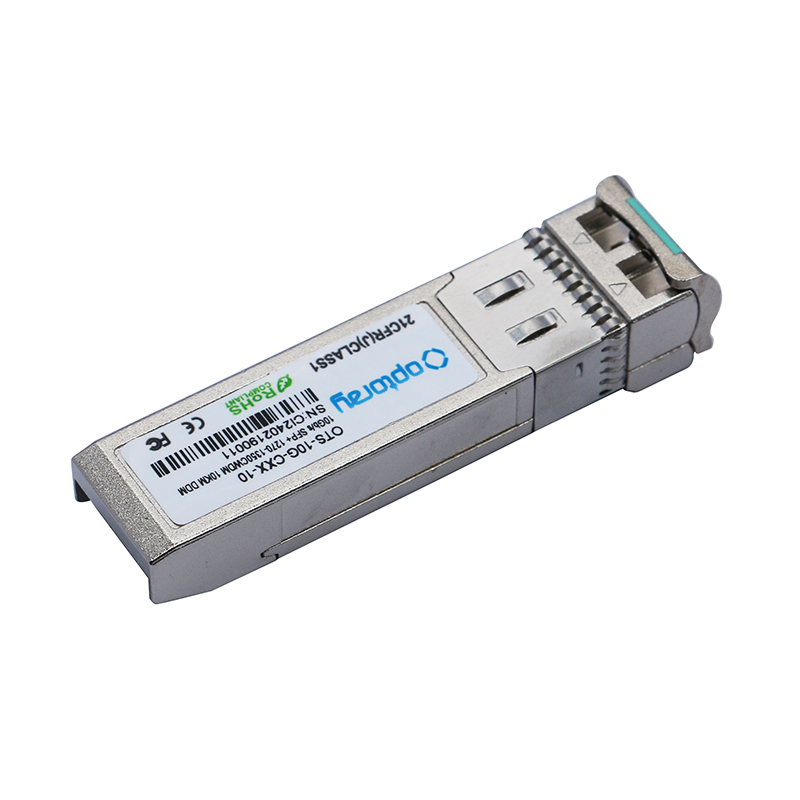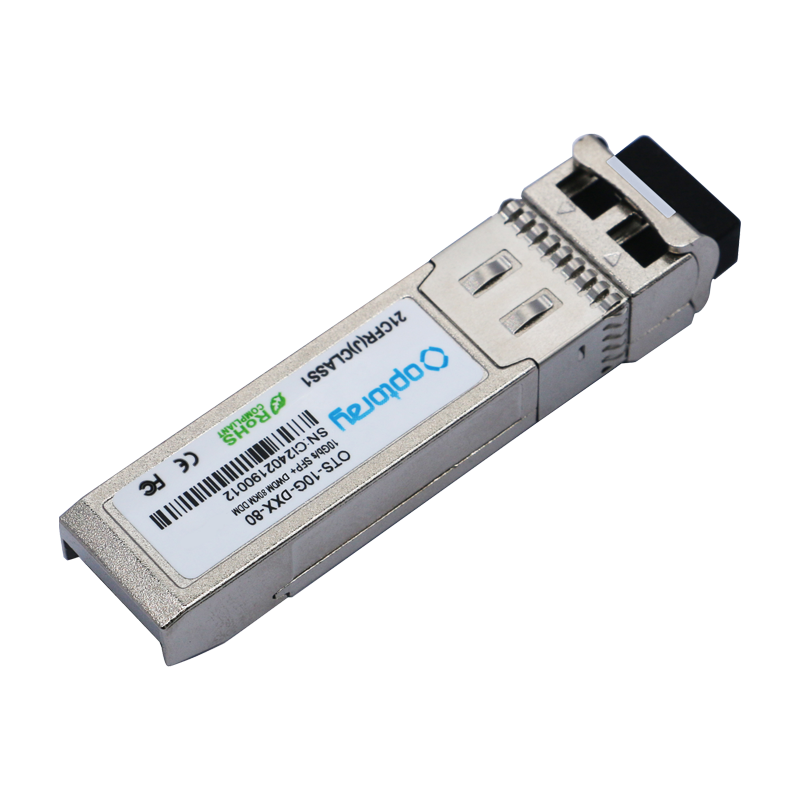+86-0559-5290604
Optical Transceiver: Technology and Applications of an Essential High-Speed Network Device
With the rapid development of modern communication technologies, optical transceivers, as a crucial component of network infrastructure, bear the core mission of high-speed data transmission. Whether in data centers, carrier networks, or enterprise LAN environments, the performance of fiber optic transceivers directly determines network stability and transmission efficiency.
How Optical Transceivers Work
An optical transceiver is a communication device capable of converting electrical signals to optical signals and vice versa. During data transmission, electrical signals are converted into optical signals at the transmitting end, transmitted through optical fiber to the receiving end, and then converted back into electrical signals, enabling long-distance, high-speed data exchange. Its core principle lies in photoelectric conversion technology, including a laser or LED light source at the transmitting end and a photodetector at the receiving end. High-performance fiber optic transceivers need to ensure low power consumption, high bandwidth, and low latency during signal conversion, which is crucial for meeting the high demands of modern communication networks.
Optical transceivers are not merely simple signal converters; their design and performance optimization involve multiple professional fields, including optical design, circuit design, thermal management, and signal processing technology. As data transmission rates continue to increase, the technical requirements for fiber optic transceivers in terms of transmission distance, signal integrity, and compatibility are also becoming increasingly stringent.
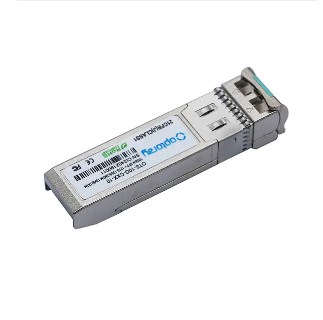
Main Classifications of Fiber Optic Transceivers
Based on transmission distance and rate, fiber optic transceivers can be classified into several types, including short-range (SR), medium-range (MR), long-range (LR), and ultra-long-range (ER) fiber optic transceivers. Short-range fiber optic transceivers are mostly used for high-speed interconnects within data centers, emphasizing low latency and high bandwidth, while long-range and ultra-long-range fiber optic transceivers primarily serve metropolitan area networks and backbone networks, focusing on signal stability and attenuation resistance.
Based on packaging and module interface, fiber optic transceivers can also be divided into SFP, SFP+, QSFP, and CFP series. SFP fiber optic transceivers are widely used in enterprise networks due to their miniaturization and high flexibility, while SFP+ and QSFP meet the requirements of 10G and above high-speed Ethernet, becoming the mainstream choice for data center interconnection and optical communication transmission. Different packaging forms of fiber optic transceivers have their own advantages in terms of compatibility, pluggability, and power management, adapting to the application needs of different network environments.
Fiber Optic Transceiver Technology Development Trends
With the rapid development of 5G, cloud computing, artificial intelligence, and the Internet of Things, network data volume is growing exponentially, placing higher technical demands on fiber optic transceivers. From a technical perspective, the development trends of fiber optic transceivers are mainly reflected in the following aspects:
**Continuous Improvement in Transmission Rates:** From the initial 1G and 10G to today's 25G, 40G, 100G, and even 400G, fiber optic transceivers need to maintain low bit error rates and high signal integrity while increasing speeds, posing challenges to the precision of optical components and circuit design.
**Miniaturization and High Integration:** Data center space is limited, leading to increasingly stringent requirements on equipment size and power consumption. Highly integrated fiber optic transceivers can provide higher bandwidth within limited space while reducing energy consumption and heat dissipation load, which is of great significance for the construction of green data centers.
**Enhanced Intelligence and Manageability:** Modern fiber optic transceivers support remote monitoring, dynamic adjustment, and self-diagnostic functions, enabling real-time monitoring of signal quality, temperature, and power consumption, improving network operation and maintenance efficiency and reducing failure risks.
**Enhanced Intelligence and Manageability:** Modern fiber optic transceivers support remote monitoring, dynamic adjustment, and self-diagnostic functions, allowing for real-time monitoring of signal quality, temperature, and power consumption, improving network operation and maintenance efficiency and reducing failure risks. For different application scenarios, multimode fiber optic transceivers offer high-density, low-cost solutions, while single-mode fiber optic transceivers meet the needs of long-distance and high-speed transmission. Continuous technological optimization results in more flexib
le network deployments and more reliable performance.
The Application Value of Optical Transceivers in Various Industries
Fiber optic transceivers are widely used in data centers, carrier networks, the financial industry, smart cities, and medical information systems. In data center environments, high-speed fiber optic transceivers support data interconnection between massive numbers of servers, enabling efficient data processing and storage. In carrier networks, fiber optic transceivers are key equipment for broadband access and backbone network transmission, ensuring stable communication quality and network coverage. In the financial sector, low-latency, high-reliability fiber optic transceivers support high-frequency trading and real-time data transmission, ensuring the safe and efficient operation of trading systems. In smart cities and medical information systems, fiber optic transceivers enable large-scale data acquisition, transmission, and processing, providing a reliable information foundation for urban management and medical services.

Meanwhile, with the rise of the Industrial Internet and the Internet of Things, the application scenarios for fiber optic transceivers are constantly expanding. The high bandwidth, low latency, and long-distance transmission characteristics of optical transceivers enable them to play a crucial role in intelligent manufacturing, intelligent transportation, and remote monitoring systems, driving the digital transformation and intelligent upgrading of various industries.
As a core component of modern communication networks, the technological level of optical transceivers directly impacts network transmission efficiency and stability. From working principles and classifications to technological development trends and industry applications, continuous innovation and optimization of optical transceivers have propelled the rapid development of network communication. Facing the future demand for massive data transmission, high-speed, low-latency, and highly reliable optical transceivers will become indispensable key equipment in a digital and intelligent society.



 English
English русский
русский


